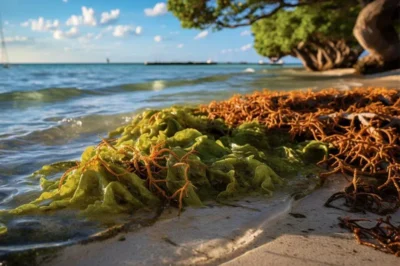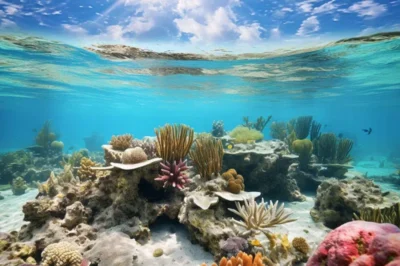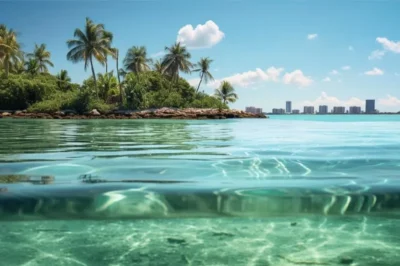- The Majestic Florida Alligator: A Brief Overview
- Interesting Size and Weight Facts
- Alligator Life Span: The Long-Living Reptiles
- Alligators and Their Remarkable Adaptation Skills
- The Alligator's Intriguing Diet
- Baby Alligators
- Alligator Communication
- Alligator's Role in Native American Culture
- Alligator Tourism in Florida
- Conclusion
Florida’s Living Dinosaurs: Exploring the Fascinating Life of Alligators
Serving as an integral part of the Sunshine State’s ecology, these creatures are a testament to the raw, untamed beauty of nature. Read on, and prepare to immerse yourself in the wild world of Florida’s alligators, where you’ll discover intriguing facts, debunk myths, and learn about the role these remarkable reptiles play in the diverse ecosystem of Florida.
The Majestic Florida Alligator: A Brief Overview
The American alligator, known scientifically as Alligator Mississippiensis, is a star attraction in Florida, where it thrives in the state’s lush wetlands, marshes, and swamps.
A living relic from the age of the dinosaurs, alligators have been on this planet for over 200 million years, mastering the art of survival. In Florida, they’re found in all 67 counties, from the extensive Everglades to the scenic St. Johns River, enhancing the state’s wild allure.
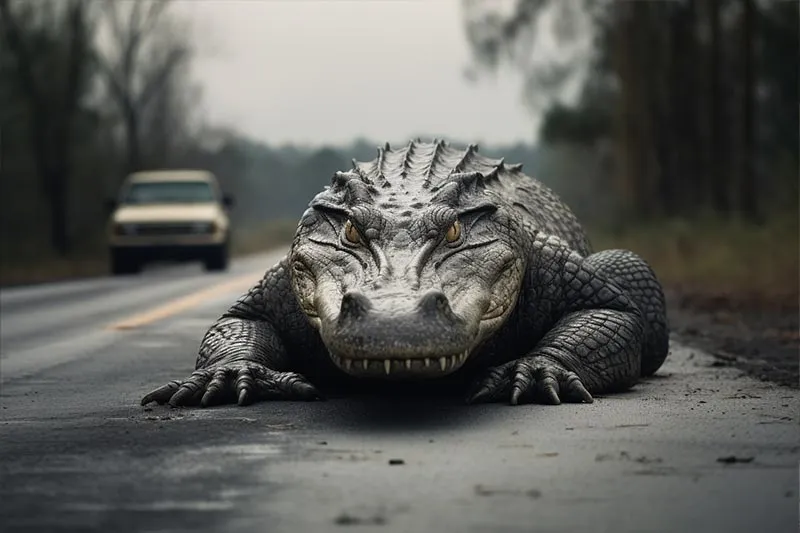
Alligators are cold-blooded creatures with an astonishing level of adaptability, allowing them to survive in both freshwater and brackish environments. With their armored bodies, powerful jaws, and keen senses, alligators embody an incredible combination of strength and sophistication.
But there’s much more to these creatures than their reputation as fearsome predators suggests. They play a vital role in their habitats, maintaining the balance of their ecosystems, contributing to biodiversity, and even creating habitats for other wildlife.
Interesting Size and Weight Facts
Size and weight are some of the most impressive attributes of Florida alligators. Adult males, or ‘bulls’, typically grow to about 11 to 15 feet in length and can weigh up to 1,000 pounds.
The state record, however, is held by a gigantic alligator measuring a whopping 17.4 feet, a testament to their awe-inspiring size potential.
In contrast, female alligators, known as ‘cows’, are slightly smaller. They usually grow to be around 8 to 9 feet long and weigh significantly less than their male counterparts. Despite their size difference, both sexes are equally fascinating, exemplifying the marvels of nature in their unique ways.
These impressive measurements make the Florida alligator one of the largest reptiles in North America, a fact that underscores their critical position in the food chain and their role as apex predators.
It also accounts for their starring role in many a Floridian folk tale, with stories of their size often passed down through generations.
Alligator Life Span: The Long-Living Reptiles
Alligators have an impressive lifespan that rivals even some of the longest-lived humans. On average, an alligator in the wild can expect to live for around 35 to 50 years.
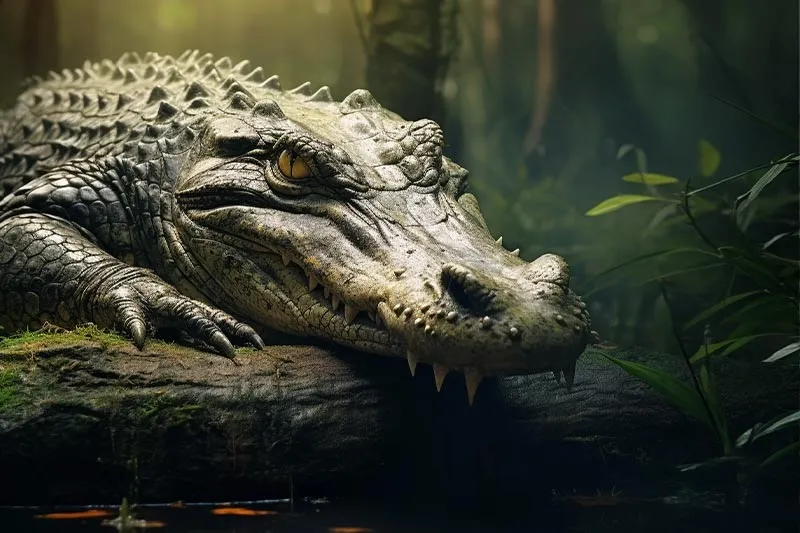
However, alligators in captivity have been known to exceed this average comfortably, with cases recorded of gators living past 70 years. The oldest known alligator, a resident of a zoo, reportedly lived to an astonishing 114 years old!
The secret to their longevity lies in their hardy nature and adaptability. Alligators have survived for millions of years through numerous climate and environmental changes, proving their status as resilient survivors.
Their ability to go into a semi-hibernation state during colder periods, slowing their metabolism to conserve energy, is a testament to this adaptability.
Alligators and Their Remarkable Adaptation Skills
One of the key reasons for the alligator’s successful survival story is their impressive adaptation skills. Alligators are equally at home in water and on land. They can swim effortlessly, glide stealthily underwater, or bask on the riverbanks, always ready to react to changing circumstances.
Their eyes, ears, and nostrils are positioned on top of their heads, enabling them to submerge their bodies while keeping an eye out for prey and predators.
When underwater, a special flap closes off their throats, allowing them to open their mouths and catch prey without swallowing water.
Furthermore, alligators are ectothermic, meaning they rely on external heat sources to regulate their body temperature. This adaptability allows them to endure the varying temperatures of Florida, from the sweltering summers to the cooler winters.
The Alligator’s Intriguing Diet
An alligator’s diet can be best described as “opportunistic”. They’re carnivores, primarily feeding on fish, turtles, various mammals, birds, and other reptiles. However, what they eat often depends on their size and available prey.
Baby alligators (known as hatchlings) start with small prey like insects, amphibians, small fish, and crustaceans.
As they grow larger, their diet expands to include larger fish, turtles, and various mammals that come close to the water’s edge. Occasionally, large adult alligators have been known to prey on smaller alligators.
One surprising fact about alligators is that they have a low metabolic rate. This means they can survive for long periods on a single large meal, making them incredibly efficient predators.
Contrary to popular belief, alligators don’t usually chase their prey but rather wait in stealth until the prey comes to them—a true testament to their patience and predatory efficiency.
Baby Alligators
Baby alligators, often referred to as hatchlings, may appear small and harmless but make no mistake, they’re equipped with the same predatory instincts as their adult counterparts.
Hatchlings typically measure between 6 to 8 inches long at birth and have bright yellow and black stripes for camouflage.
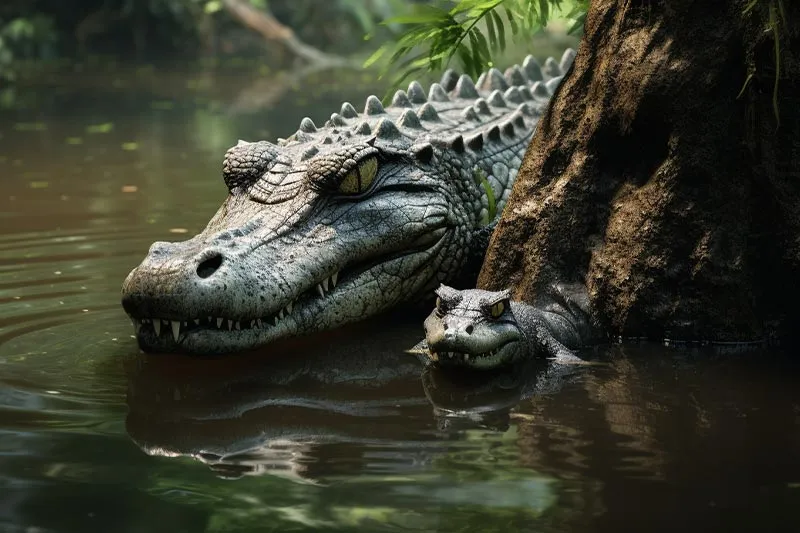
They may start small, but these hatchlings grow rapidly, approximately a foot a year for the first few years of their lives. Even at this early stage, they are capable predators.
Their diet consists mostly of small fish, insects, and amphibians, but they’re not beyond using their sharp teeth and strong jaws to tackle larger prey if the opportunity arises.
A significant fact about baby alligators is the role their mothers play in their survival. Mother alligators are fiercely protective, guarding their nests from predators and even gently carrying the hatchlings in their powerful jaws to the water.
However, despite this protection, survival rates for baby alligators are low due to threats from birds, raccoons, large fish, and even other alligators.
Alligator Communication
When it comes to communication, alligators are far more complex than the grunts and hisses we often associate with them. They communicate through a combination of sounds, postures, and even touches, especially during mating season.
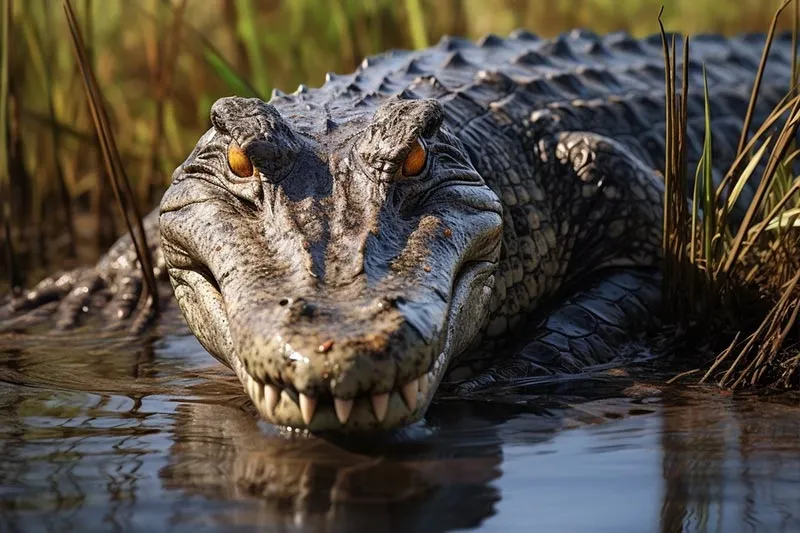
One of the most fascinating aspects of alligator communication is the ‘bellow.’ Alligators perform this deep, resonating call—often with their bodies inflated and noses lifted—to communicate presence and territory, particularly during mating rituals.
Additionally, baby alligators emit a high-pitched chirping sound to alert their mothers if they’re in danger.
In addition to auditory communication, alligators also utilize physical signals. Dominant displays, like jaw-slapping on the water’s surface or mounting, play a key role in establishing hierarchy or attracting mates.
Alligator’s Role in Native American Culture
The relationship between alligators and Native American tribes, especially the Seminoles of Florida, is rich with history and reverence. To the Seminoles, alligators are respected members of the natural world, often symbolizing strength, survival, and protection.
Alligators feature prominently in their storytelling and oral traditions. Legends often portray alligators as wise creatures that offer guidance or as fierce protectors of the community. The Seminoles even have a clan named after the alligator, known as ‘Hvlpvtvlke’ or ‘Alligator Clan’.
Alligator Tourism in Florida
When it comes to wildlife tourism, Florida is well-known for its incredible alligator viewing opportunities. From the extensive Everglades National Park to the Alligator Alley highway, there’s no shortage of locations where tourists can safely view these majestic creatures in their natural habitats.
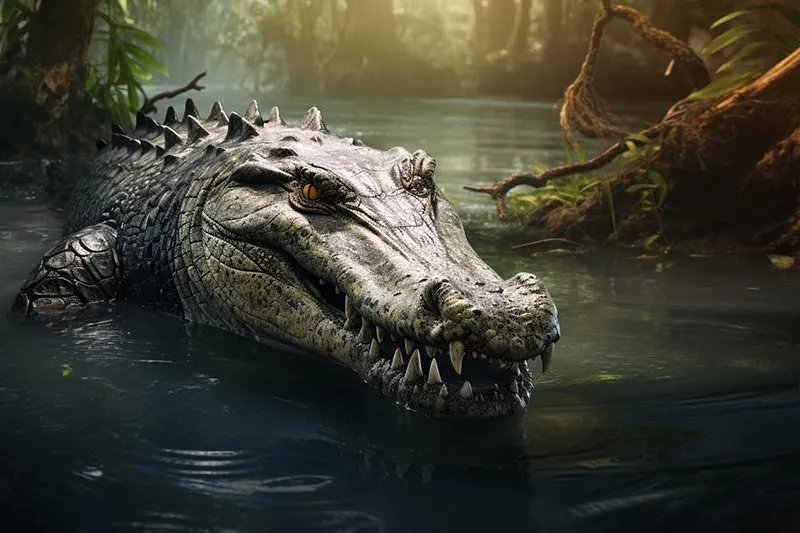
Airboat tours are particularly popular, offering an exhilarating journey through marshes and swamps teeming with alligators.
Moreover, several wildlife parks and alligator farms across the state provide up-close encounters with these reptiles, including the opportunity to see feeding sessions.
However, alligator tourism isn’t without precautions. Visitors are advised to maintain a safe distance from these wild animals and never feed them. Remember, they may be fascinating creatures, but they’re also wild predators deserving of respect and caution.
Conclusion
In this journey through the world of Florida’s alligators, we’ve uncovered an array of intriguing facts that reveal their impressive adaptability, significant cultural symbolism, essential roles in the ecosystem, and immense value to the state’s economy.
As much as alligators are awe-inspiring, they’re also a reminder of nature’s raw, untamed beauty that requires our respect and understanding. Whether it’s their distinctive communication or their remarkable survival skills, there’s no denying the fascinating allure of these ancient reptiles.







